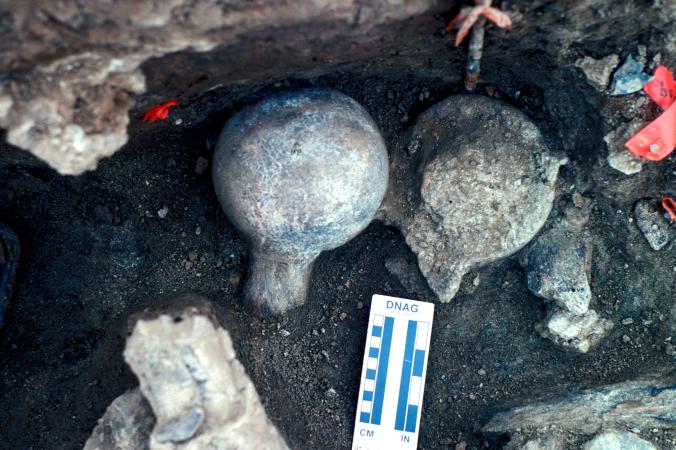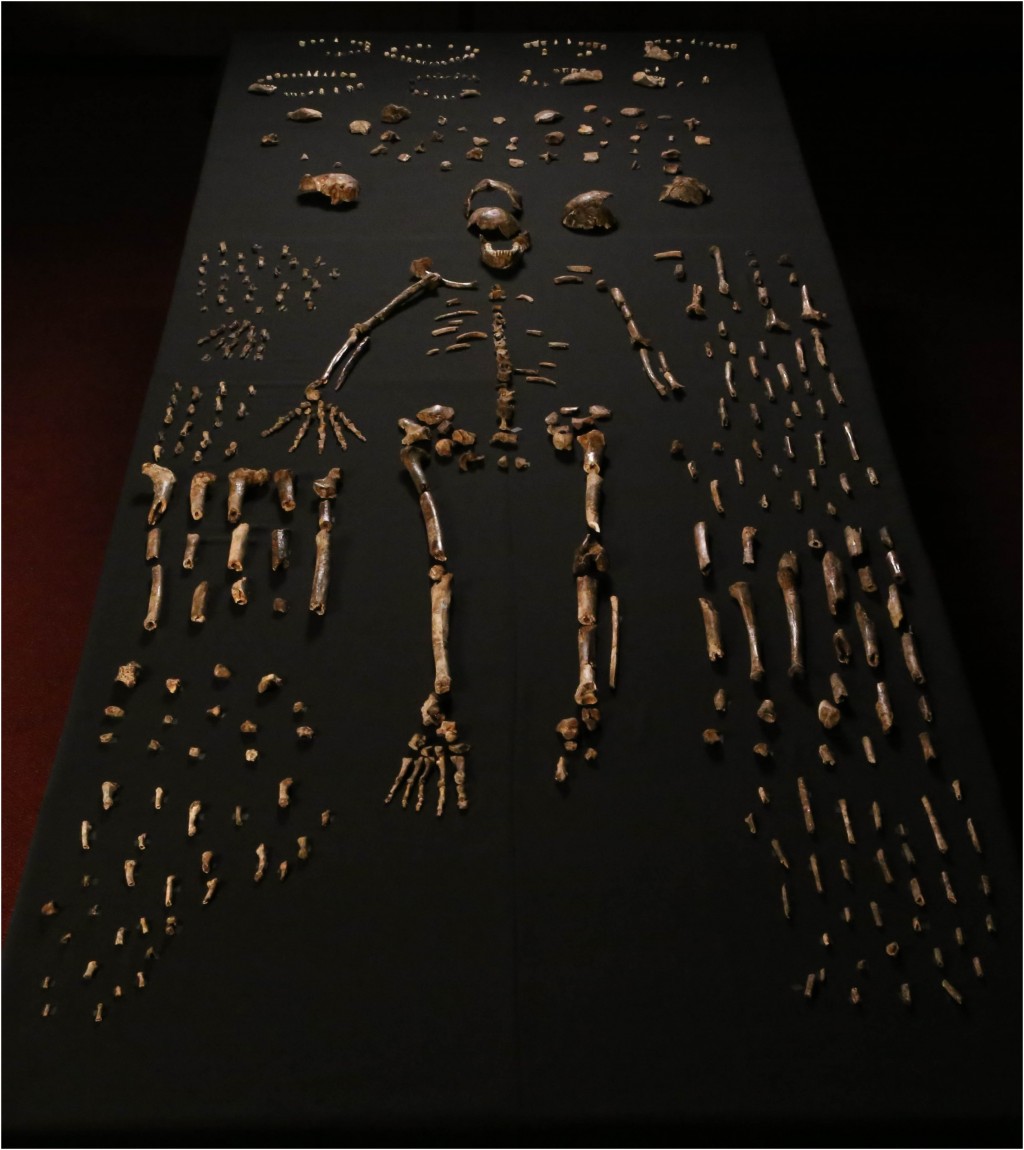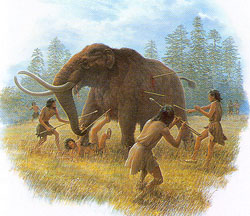


Mitch’s Blog
Marching for Science… With Mastodons
Sunday, April 30, 2017
It only took a couple of days after the March for Science that demonstrated why there was a March. The importance of science is amply demonstrated every day somewhere in the academic world, but in my own corner, archaeology, there were two big stories that broke within days of the March that highlighted the differences between science, crowdsourcing, and political posturing.
 First came the news that was not yet news. Lee Berger, a paleoanthropologist working in South Africa became a media star two years ago with the discovery of homo naledi, a large collection of bones of a human ancestor discovered in cave in South Africa. He gathered 60 scholars to study the bones and the cave and published the peer-reviewed results in eLife. The accompanying news conference left researchers’ jaws agape from the sheer volume of individuals discovered, the primitive shapes of their bones, and the fact that the individuals placed the cave could only have been brought by fellow humans.
First came the news that was not yet news. Lee Berger, a paleoanthropologist working in South Africa became a media star two years ago with the discovery of homo naledi, a large collection of bones of a human ancestor discovered in cave in South Africa. He gathered 60 scholars to study the bones and the cave and published the peer-reviewed results in eLife. The accompanying news conference left researchers’ jaws agape from the sheer volume of individuals discovered, the primitive shapes of their bones, and the fact that the individuals placed the cave could only have been brought by fellow humans.
The bones were most reminiscent of human ancestors who roamed the planet over 2 million years ago, our earliest ancestors. But no excavation had ever turned up people from that long ago who had deliberately buried their dead, an activity that implies and understanding of time, the future, life/death, and raises the possibility of belief in an afterlife. That seemed to be a cognitive development reserved for our modern species and our immediate predecessors. It would truly revolutionize our understanding of human evolution.
But Berger couldn’t give us one critical piece of information. How old were they? Sure, their shapes implied 2 million years, but none of the traditional ways that archaeologists date remains or cave deposits worked to produce a date when the bodies were deposited. Berger was the first to admit this gap. That’s how science works, with lots of question marks.
In an interview with National Geographic this week, two years after the announcement of the homo naledi finds, he finally claims that, despite their primitive look, the bones were no more than 250,000 years old. This comes from finding further human remains in a nearby cave where geophysical dating techniques worked. While the research itself has not been published, publication is likely imminent and will be pored over carefully by the archaeological community when it is.
Even if the age of the fossils is no longer in the millions of years, this is still big news. An archaic species of hominins was still wandering around southern Africa when our modern human ancestors were about to be hatched. It further complexifies the human family tree (a bush would be a better metaphor). It’s not the same conclusions that Berger and his team originally proposed. But that’s what good scientists do. They offer us the evidence they have and the conclusions they draw from it. Then they go back looking for more evidence to further support their interpretations. If the additional evidence demands it, the hypothesis is changed to accommodate the new data. Science is self-correcting.
Within hours of this announcement came announcement of a peer-reviewed article published in the prestigious journal Nature. It claimed a set of mastodon bones found in San Diego County were  pounded open for their marrow by humans using stone tools, dating to 130,000 BC. That too had the archaeological community in a tizzy, since the oldest generally-agreed remains from the Americas only goes back 15,000 years. The blogosphere and social media have been abuzz with archaeologists reacting to the article ever since. After all, if modern humans didn’t leave Africa until after the time period of these finds, it means that someone else—Neanderthals, Denisovans, or some other unknown hominin species—is responsible for this activity, a settlement of the Americas far earlier than anyone has claimed, other than Native American tribes who insist their people have always been here. Like homo naledi, this would overturn one of the basic assumptions about human prehistory.
pounded open for their marrow by humans using stone tools, dating to 130,000 BC. That too had the archaeological community in a tizzy, since the oldest generally-agreed remains from the Americas only goes back 15,000 years. The blogosphere and social media have been abuzz with archaeologists reacting to the article ever since. After all, if modern humans didn’t leave Africa until after the time period of these finds, it means that someone else—Neanderthals, Denisovans, or some other unknown hominin species—is responsible for this activity, a settlement of the Americas far earlier than anyone has claimed, other than Native American tribes who insist their people have always been here. Like homo naledi, this would overturn one of the basic assumptions about human prehistory.
Most professional responses are critical of the article. But the authors, all serious archaeologists, and the equally competent reviewers for Nature, thought they had a strong enough case to publish the article. And, like Berger, people will now start looking more carefully at geological deposits of this age to see if there are others like it to be found. If other sites appear that support human occupation of the Americas over 100,000 years ago, our textbooks will need to be rewritten. But that might not be until our grandchildren are in school, as it will take many other sites to provide enough evidence to convince most archaeologists that our time frame should be changed that radically. Or the evidence won’t be forthcoming, and this hypothesis will sink into oblivion. That too is science. Scholars propose new ideas and publicly present their evidence. The rest of the professional community evaluates and decides whether to accept it.
It was only a couple of decades ago that almost all serious prehistorians believed that the Americas were first settled by hunters crossing the Bering land bridge and following game south across  the Americas about 12,000 years ago. They hunted these megafauna with distinctive large spearheads called Clovis points. Beginning in the 1970s, a few scholars claimed to have found remains in the Americas in Chile, Pennsylvania, South Carolina, and elsewhere, that predated that culture. It took three decades and the discovery of many more sites like those before the general community of archaeologists accepted that people had arrived in America before the Clovis period.
the Americas about 12,000 years ago. They hunted these megafauna with distinctive large spearheads called Clovis points. Beginning in the 1970s, a few scholars claimed to have found remains in the Americas in Chile, Pennsylvania, South Carolina, and elsewhere, that predated that culture. It took three decades and the discovery of many more sites like those before the general community of archaeologists accepted that people had arrived in America before the Clovis period.
That’s also the way science works. A single discovery, whether it is a pyramid purportedly built by aliens or a lost city in the Honduras jungle, doesn’t impress scientists. It’s only a starting point. Testing, retesting, and accumulating more information eventually tips the balance one way or the other. Scientific theories develop over a long time and many studies. The philosopher Thomas Kuhn wrote a classic book about this process.
Scientific theories are the work of many researchers over long periods of time and represent the consensus of most scientists who have been convinced by evidence. Sometimes scientists have to say they don't know. Even when the get it wrong, science is self-correcting as new evidence emerges. Silencing scientists by cutting scientific funding only leads to less evidence with which to make good decisions. And that’s why we're marching for science.
Photo credits: Elife for homo naledi. San Diego Museum of Man for mastodon bones. U Illinois for Clovis hunters.
© Scholarly Roadside Service
Back to Scholarly Roadkill Blog
Scholarly Roadside Service
ABOUT
Who We Are
What We Do
SERVICES
Help Getting Your Book Published
Help Getting Published in Journals
Help with Your Academic Writing
Help Scholarly Organizations Who Publish
Help Your Professional Development Through Workshops
Help Academic Organizations with Program Development
CLIENTS
List of Clients
What They Say About Us
RESOURCES
Online Help
Important Links
Fun Stuff About Academic Life


